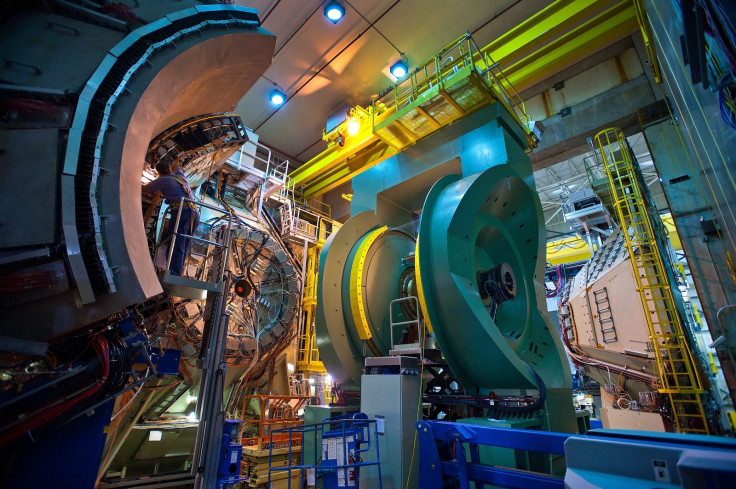Physicists shocked after spotting particles wildly spinning in the 'wrong' direction
The new findings may help researchers understand more about high-energy particle collisions and further uncover more about complex particle physics.

Physicists have just observed some bizarre atomic collisions and were shocked to discover particles spinning in the opposite direction, throwing out previous scientific predictions of their movements. A new study explains how the nucleus produced by a spinning proton colliding with another proton or nucleus can spin off in the opposite direction, depending on the mass of the particle that collides with the spinning proton.
Scientists using the Relativistic Heavy Ion Collider (RHIC) at the US Department of Energy's (DOE) Brookhaven National Laboratory, found that when spinning protons collide with a larger gold nucleus, the neutrons switch directions to the left instead of the right.
"What we observed was totally amazing," Brookhaven physicist Alexander Bazilevsky, a deputy spokesperson for the PHENIX collaboration at RHIC, said in a statement. "Our findings may mean that the mechanisms producing particles along the direction in which the spinning proton is traveling may be very different in proton-proton collisions compared with proton-nucleus collisions."
In 2001, RHIC first demonstrated how proton-to-proton collisions produced neutrons that veered off to the right, given that the spin was maintained in the same direction. However, with the new study, physicists looked at how these collisions and neutrons were changed with the introduction of nuclei of varying sizes.
To put this in perspective, imagine a spinning billiard ball spin off in one direction after it hits another ball of the same size, yet the same ball bounces off in the opposite direction when it hits a bigger ball, despite the original spin maintained in the same direction.
"We anticipated something similar to the proton-proton effect, because we couldn't think of any reasons why the asymmetry could be different," said Itaru Nakagawa, a physicist from Japan's RIKEN laboratory, who served as PHENIX's deputy run coordinator for spin measurements in 2015.
According to the researchers, the electromagnetic force of the the larger particles in the collision, dominates the interaction of the particles, eventually flipping the direction of the neutrons that are produced by the impact of the two protons.
"In the particle world, things are much more complicated than the simple case of spinning billiard balls colliding," Bazilevsky said. "There are a number of different processes involved in particle scattering, and these processes themselves can interact or interfere with one another."
The new study's findings may help researchers understand more about high-energy particle collisions, such as those that occur when cosmic rays from outer space hit the particles in Earth's atmosphere. The new research could also help scientists further uncover more about complex particle physics.
The results of the new study have been published in the journal Physical Review Letters.







